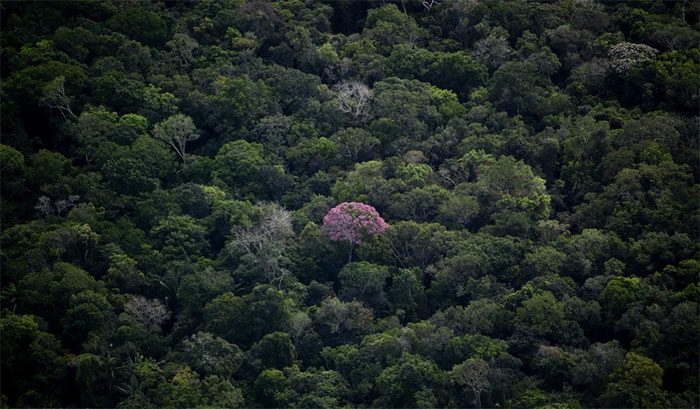A study published on September 13 by James Cook University (JCU), based in Cairns, Australia, reveals that high ground-level ozone concentrations have significantly impacted the ability of tropical forests to absorb and store CO2 from the atmosphere.
At the testing site in Cairns (Northeast Australia), researchers measured the sensitivity to ozone of various tropical tree species and then incorporated their findings into a global vegetation model.

Amazon rainforest in Amazonas state, Brazil. (Photo: AFP/TTXVN).
The lead author of the study from JCU and the University of Exeter in the UK, Mr. Alexander Cheesman, stated: “We found that the current levels of ozone caused by human activities have significantly diminished the net primary productivity (NPP) of all tropical forests from the atmosphere.“
According to the research results, from 2005 to 2014, ozone produced by human activities decreased the average NPP of tropical forests by 5.1%. The researchers estimated that this would lead to a 17% reduction in NPP in the 21st century.
Ozone is a molecule composed of three oxygen atoms. It is one of many natural gases that make up the Earth’s atmosphere and filters harmful ultraviolet radiation from the Sun.
However, ground-level ozone, due to the emission of precursor chemicals from human activities, is harmful to human health and is a major component of smog.
The authors of the study noted that ozone concentrations across the tropics are expected to rise further, and current and future forest restoration areas will be differently affected due to increased ozone levels.



















































